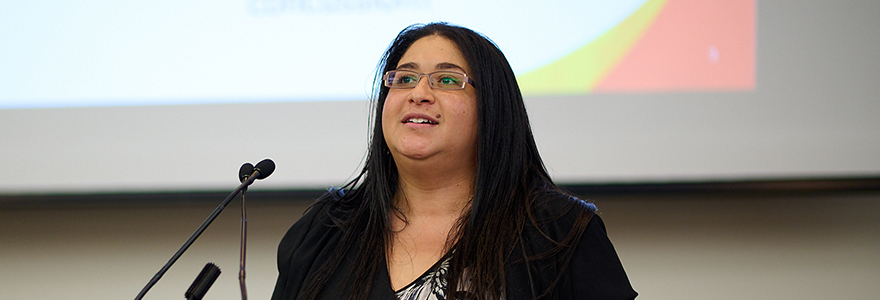Much accomplished during 10 years of See the Line

Photo by Mychailo Kovaliv
By Cam Buchan
Whether it’s creating community access to reputable concussion information or moving the research bar forward, much has been accomplished over the decade-long See the Line initiative, held annually at Western University.
The collaboration between Western’s Schulich School of Medicine & Dentistry and Faculties of Health Sciences and Engineering sought to educate athletes, coaches, parents, and practitioners about the serious impact of concussions.
And with the conclusion of its mandate on Wednesday, Faculty of Health Sciences Dean Jayne Garland looked back on the accomplishments of See the Line with satisfaction.
“See the Line was intended to be a vehicle for knowledge exchange in the community, and as a means of continuing education for practitioners who could receive the latest education,” said Garland, who is current event Chair. “The biggest accomplishment has been the fulfillment of that mandate.”
One of the knowledge mobilization outcomes of See the Line was Brainstorm, a series of TED-style talks featuring Western University researchers on the topic of concussions. Along the way, See the Line also celebrated the introduction of Rowan’s Law, with the participation of Gordon and Kathleen Stringer, parents of the late Ottawa teen Rowan Stringer, who passed away on May 12, 2013, of “second impact syndrome” after suffering three concussions in less than a week while playing high school rugby.
Watch the video about Rowan’s story.
See the Line was initiated in 2013 by Michael Strong, former Dean of Schulich Medicine & Dentistry, and Andy Hrymak, former Dean of Engineering and Jim Weese, former Dean of Health Sciences. Over the 10 years, the event has hosted athletes from across the sports spectrum, some of the world’s top concussion researchers and speakers.
Retired NHL player Eric Lindros was named the See the Line Honorary Chair. The initiative's inaugural events featured Canadian football notables Andy Fantuz and Greg Marshall.
"Through shifting the research culture from competitive to collaborative, this initiative will continue to raise concussion awareness, not just in sport, but in all aspects of life. Although impossible to prevent entirely, the goal is to better recognize and treat patients with our sights set on a full recovery - with specialized treatment based on the unique needs of each patient," Lindros said at the inaugural event.
Now President of the Canadian Institutes of Health Research, Strong has been a strong advocate of the initiative. He was a participant on a panel event at Wednesday’s event, along with Hrymak, currently Special Advisor to the President on Industry Partnerships, the Green Economy and Sustainability, and Weese, now Professor, School of Kinesiology.
At the inaugural event, Strong said: “London is an ideal place for concussion research because we have such an incredible depth of expertise and resources here - everything from clinicians specializing in sport-related injuries, to our advanced imaging facilities, to our outstanding basic science and clinical researchers. We have everything we need here to be doing this type of work, and as we all know, there is a tremendous need for it.”
While the See the Line events have concluded, the work continues.
“The initiative now is taking other shapes as the legacy of See the Line lives on through its broad community of partners,” said Garland.








